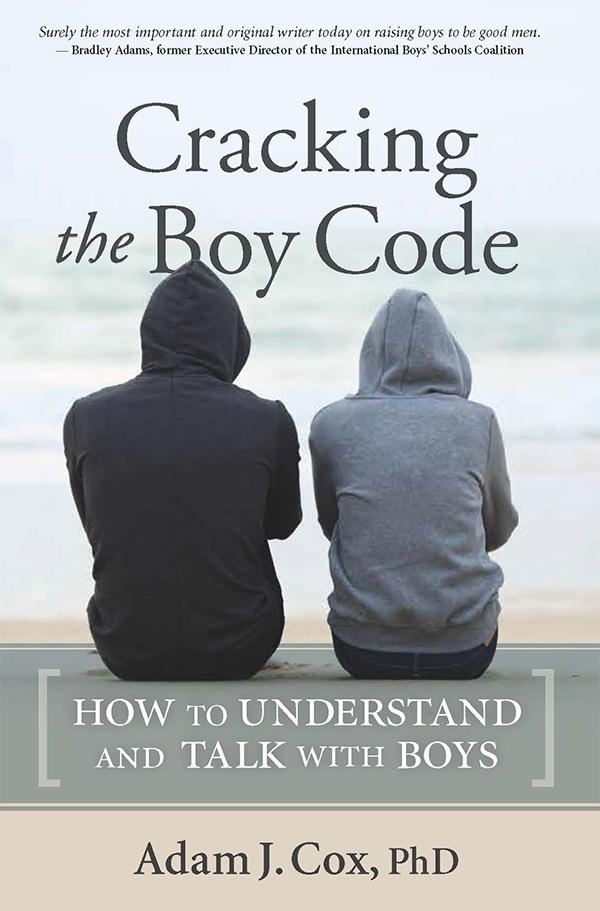Recently, a parent contacted me with concerns about his 7 year-old son, who was quiet, introverted, and highly focused on a few hobbies. “Could he be autistic?,” he asked. While the boy did not meet the diagnostic criteria for autism, or an autistim- spectrum disorder, his father was voicing a concern psychologists and pediatricians are hearing more commonly these days. News of the nation’s autism epidemic is everywhere. In some states, there are several times more children being diagnosed with autism spectrum disorders than just a decade ago. Asperger’s Syndrome (sometimes known as high- functioning autism) seems to be particularly prevalent, with estimates of its occurrence ranging from 1 in every 166 to 500 births. Although there are several theories as to why we are seeing such an epidemic, as of yet, no single theory has achieved scientific consensus among researchers.
Lack of social communication skills is a core trait of all types of autism. However, I wonder if we are too quick to assign communication problems such serious diagnostic labels. A brief checklist of the communication problems common to boys included on my website and in my recent book Boys of Few Words: Raising Our Sons to Communicate and Connect may help you decide if your son is simply struggling with the kinds of expressive challenges found among many different types of boys.
By all means have your child professionally evaluated if you have serious concerns. But make sure the professional you visit understands the psychology of boys, and can tell the difference between a syndrome like high-functioning autism and something more manageable, like a nonverbal learning disability. More than once, I have encountered a child who seemed locked in his own thoughts, unwilling or unable to join the social world around him. But not every case was an autism-spectrum disorder–a thorough evaluation can reveal a wide range of potential causes for lack of social interest and communication skills. The good news is that with time, relationship, and strategic encouragement, the great majority of kids can learn to connect with others, and even enjoy it! Finding the key that unlocks a child’s mind and heart requires patience and a steadfast belief in the power of your own love and concern. And of course, one practical expression of that concern is to strive to get an accurate assessment of the challenges your child faces, so your interventions will help.
I believe the autism epidemic is real and deserves the analysis of the country’s best medical minds. Children who have autism or a related problem benefit from early professional diagnosis and intensive intervention. Yet I also believe that the constant buzz about autism has led to many of us being hypersensitized about whether our child “has it.” Just as an energetic 5 year-old may be misconstrued as hyperactive, a stoic 7 year-old may be thought of as having some variant of autism. Yet stoic boys are no more a new phenomenon than energetic pre-schoolers.
As our world changes, so do our expectations of children. The problem is people take longer to change and evolve than society. That difference in tempo should not be the reason for a neurological diagnosis. It’s a little like getting mad at a computer that doesn’t run fast enough to operate new software. The computer is running as fast as it can – as fast as it was made to do – yet software is evolving too quickly for the computer’s capabilities. I will talk more about problems with tempo as my next book, No Mind Left Behind nears publication in 2007.
For more information about autism and Asperger’s syndrome, visit:
The National Institute of Mental Health
Online Asperger Syndrome Information and Support (O.A.S.I.S.)
*The above site includes a very helpful article by Susan Moreno and Carol O’Neal, “Tips For Teaching High Functioning People with Autism”
Please check my website’s Resources section for other links to organizations that can provide more information about Autism, Asperger’s Syndrome, and other child development concerns.
This newsletter’s take home message: Effective intervention begins with an accurate understanding of what needs help!
What’s News
Eye contact, or lack thereof, is a major diagnostic factor in determining whether some has an autism spectrum disorder. It makes sense that a lack of eye contact would impair social communication because so much of what we need to know about another person’s communication comes from their eyes. The most recent issue of Brain Work, the neuroscience newsletter of The Dana Foundation, discusses this issue and provides the photo at right which compares the gaze pattern of autistic vs. non- autistic individuals. The yellow line indicates the direction of eye movement and the red line indicates the point of fixation. On the left side is a non-autistic gaze pattern and on the right side, you see what happens for an autistic person – the gaze fixates on a facial point far away from the eyes.
Please remember that even for kids without autism, learning to use eye contact is incredibly important to staying socially connected. Some children require lots of reminding and others will need exercises or games to further develop visual decoding strategies. Sometimes role-playing or charades can be helpful, for example, “How about I act out how I feel about my boss, and you guess what I’m thinking by looking at my eyes!” You can also find books and posters that illustrate a variety of facial expressions. A good poster of emotions can be found at http:// www.childtherapytoys.com.
Ask Dr. Cox…
Question: My 3 year-old has always had stranger anxiety. He often screams and cries when we encounter new people. Is there anything that I can do to help him?
Answer: Begin by accepting that what seems normal or comes easily for his siblings or another child may take longer for him. One strategy that may work for you is to slowly build up his resilience to fear by scheduling play dates with another shy child. (A rambunctious playmate may be too much for him to begin with!) At first, stay in the room as they play together, providing intermittent verbal contact as a source of reassurance. Gradually, try leaving the room for short periods, just a few seconds at first, and always announce you will be leaving and reassure him that you will be right back. As he increases his tolerance of separation, and acceptance of others, you can begin taking “baby steps” to help him experience other new people and situations. If he continues to experience anxiety, it may be helpful to consult a professional who can work with you and your son individually, to rule out other causes for his behavior and develop a thorough intervention plan.
Question: This seems like a small problem, but it’s driving me crazy! My daughter, who is 11, won’t keep her room clean. There are clothes, games, school papers, and sports equipment strewn all across the floor. I’ve tried taking away privileges, reasoning with her, and offering incentives, but unless I’m constantly nagging, her room “explodes” again. What should I do?
Answer: Wow, you’re touching on a frustration shared by many parents! When parents are faced with some type of noncompliance the first thing to determine is if it’s intended as defiance, or if it is the more common problem of low motivation. If it is the latter issue, help your daughter break down the cleaning into several steps. Suggest that she only tackle one step at a time, but that she must do at least one step each day. Ask that the task be completed before she comes to breakfast, emphasizing it should take no more than five minutes. Sometimes kids can become anxious and overwhelmed by a large task. Prevention is also key to success. Does her room have sufficient storage? Are different “task areas” clearly defined? (Think of a classroom—low and accessible shelves, labels, and workstations. This model of organization is very effective for kids, as teachers know!) Also, consider if there are some areas in which you’re willing to flex. For example, would it be okay if her clothes were hung on hooks instead of hangers? Last, if this is “driving you crazy,” it could be because you feel disrespected because she’s not taking care of the things you provide for her or burdened by the prospect of cleaning the room yourself. If so, it can be hard to bear in mind that some 11 year-olds are oblivious to their surroundings. A visual reminder, such as a chart of clean-up tasks, can depersonalize the issue; rather than mom “nagging,” the chart becomes the “reminder.” Take heart and persevere— organizational abilities are part of the brain’s “executive functions,” which continue to develop through adolescence.
Question: Our 5 year-old son plays with the neighbor’s children. They are basically good kids, but they use bad language—which they’ve learned from their own parents. Recently, we’ve noticed our son using some of the same words, which are definitely unacceptable to us. How do we intervene without ruining the relationship with our neighbors?
Answer: This is a good opportunity to teach your son about differences! Without making a big deal of it (you don’t want to glamorize that bad language), remind your son that those are words you don’t use because you think they don’t sound smart (most 5 years-olds are motivated to impress) and can hurt people’s feelings. Offer an alternative word choice or paraphrase so that your child knows you hear him. If your son continues to use the words, it may be because he sees that he’s “getting a rise” from you and enjoys the power of their shock value. Try not to overreact; that’s fueling the fire. You might want to use that tried and true parental device, the humorous analogy. “What if Sponge Bob decided he only wanted to bark? Would you bark too? Even if it made you sound foolish?” The exception is if the bad language you refer to is more than variants of George Carlin’s famous 7-words-you-can’t-say-on-the-air. If the children are using racial or sexual epithets, a serious sit-down and “no-tolerance” rule is in order. (We do not use that word in this house. Period. If I hear you say it again, there will be xxx consequence.”) While you can’t tell the neighbors how to speak in front of their own children, you can provide your neighbor’s children with an alternative example of how people can communicate effectively without invective. If the neighbor’s children are in your home, you can ask, in an age appropriate way, for them to use different words. (“Can you think of another way to tell me you’ve messed up?”). If you do so kindly, you’ll avoid embarrassing them for an unfortunate attribute that is not their fault, and help preserve the friendship between the kids.
Would you like to ask Dr. Cox a parenting question? The answer may appear in a future issue of Family Matters!
Adam Cox, PhD, ABPP




